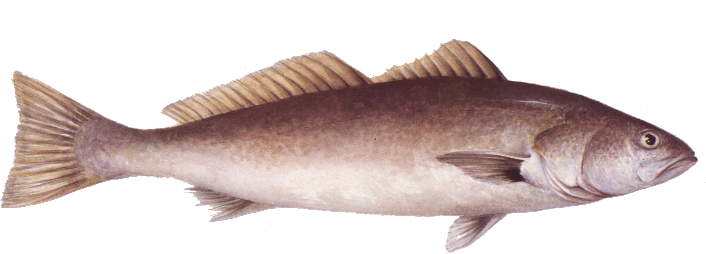White Seabass - What to know, when & where to get it
White Seabass
━━━━
(year-round)
White seabass is a low-fat fish with a mild flavor, known for its firm, meaty texture. The meat has thick, large white flakes that hold up well to grilling, baking or frying.
White seabass are the largest species in the croaker family (it’s not actually a seabass), with an elongated body and a large mouth. Their average size is 3 ft and 20 pounds, but the largest caught have been 5+ feet long and 90+ pounds! They’re blue/grey in color, with dark vertical stripes and a silver belly, and are usually caught by drift gillnets or hook and line.
These fish range from Baja California to Southeastern Alaska, and spawn in the southern range of their habitat. Since they prefer warmer water, fewer numbers of white seabass are found in the northern range of their habitat.
Buying Tips
Ask for fresh, local white seabass from your fishmonger or community supported fishery (CSF).
━━━━
Be adventurous and try a new preparation of this fish.
Seafood Illustration courtesy of “Monterey Bay Aquarium®
Recipes
How to Cook Pacific White Seabass
(The Spruce Eats)
━━━━
Baked California White Seabass with Zucchini, Corn and Tomatoes
(Real Good Fish)
━━━━
Ten Best White Seabass Recipes
(Yummly)
More about White Seabass
White seabass: life, habitat, and management
White seabass (Atractoscion nobilis) live along the Pacific Coast from Southwest Alaska to Baja California, with the largest populations in the Baja and Southern California areas. In warmer water years, they are found in greater numbers on the northern part of their range. Their lifespan is 8-28 years, and they spawn in late spring and early summer in rocky coastal areas.
White seabass habitat is along the open coast in kelp beds, reefs, offshore banks, as well as in the open ocean. They feed on other small fish, like anchovies, mackerel, sardines, red crabs and squid. Their natural predators are sharks, sea lions, and humans.
This fishery is managed under the White Seabass Fisheries Management Plan. Their stocks are recovering after declines from the 1960s to the 1990s, so they are monitored closely. White seabass is currently harvested at sustainable levels according to the Monterey Bay Aquarium Seafood Watch, which lists them as a “Good Alternative.”
SOURCES:
CA SeaGrant, NOAA, Seafood Watch, CDFW
Where & When to Find White Seabass
White seabass is open year-round in Central and Northern California but is generally harvested in the late spring to fall.
You can buy white seabass directly from local restaurants, grocery stores, and fish markets —check out our Local Catch page for more information, or check out our recipes page for tips on how to store, prepare, and cook white seabass and other seafood.
Want a fun calendar to remind you of what is in season here in Monterey Bay? Download + print our seafood seasonality guide (downloadable pdf).




